Abstract
To determine the characteristics of and mechanisms causing the bradycardia during sleep apnea (SA), both patients with SA and normals were studied. Evaluation of six consecutive SA patients demonstrated that bradycardia occurred during 95% of all apneas (central, obstructive, and mixed) and became marked with increased apnea length (P less than 0.01) and increased oxyhemoglobin desaturation (P less than 0.01). Heart rate slowed 9.5 beats per minute (bpm) during apneas of 10-19 s in duration, 11.4 bpm during 20-39s apneas, and 16.6 bpm during 40-59-s apneas. Sleep stage had no effect unexplained by apnea length or degree of desaturation. Oxygen administration to four SA patients completely prevented the bradycardia although apneas lengthened (P less than 0.05) in three. Sleeping normal subjects did not develop bradycardia during hypoxic hyperpnea but, instead, HR increased with hypoxia in all sleep stages, although the increase in HR was not as great as that which occurred while awake. Breath holding in awake normals did not result in bradycardia during hyperoxia (SaO2 = 99%), but was consistently (P less than 0.01) associated with heart rate slowing during room air breath-holds (-6 bpm) at SaO2 = 93%, with more striking slowing (-20 bpm) during hypoxic breath-holds (P less than 0.01) at SaO2 = 78%. Breath holding during hyperoxic hypercapnia had no significant effect on rate. Breath holding in awake SA subjects demonstrated similar findings. We conclude that the bradycardia of SA is a consistent feature of apnea and results from the combined effect of cessation of breathing plus hypoxemia.
Full text
PDF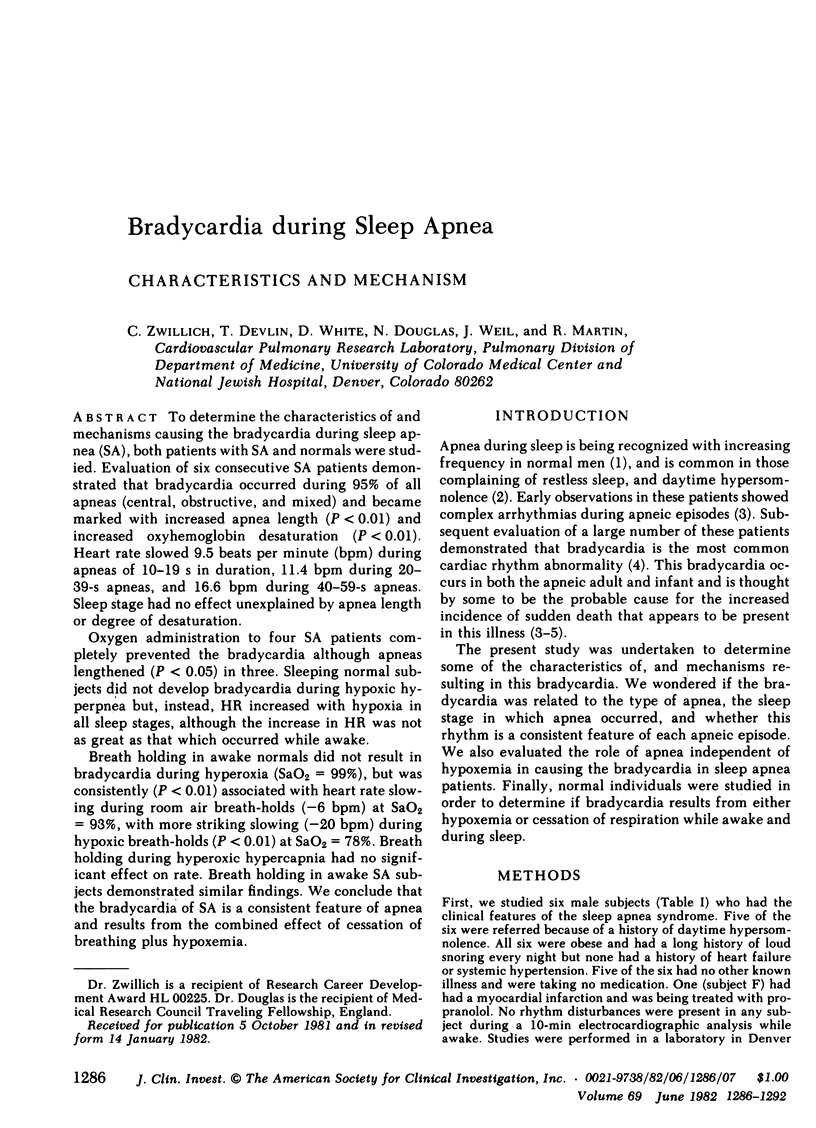
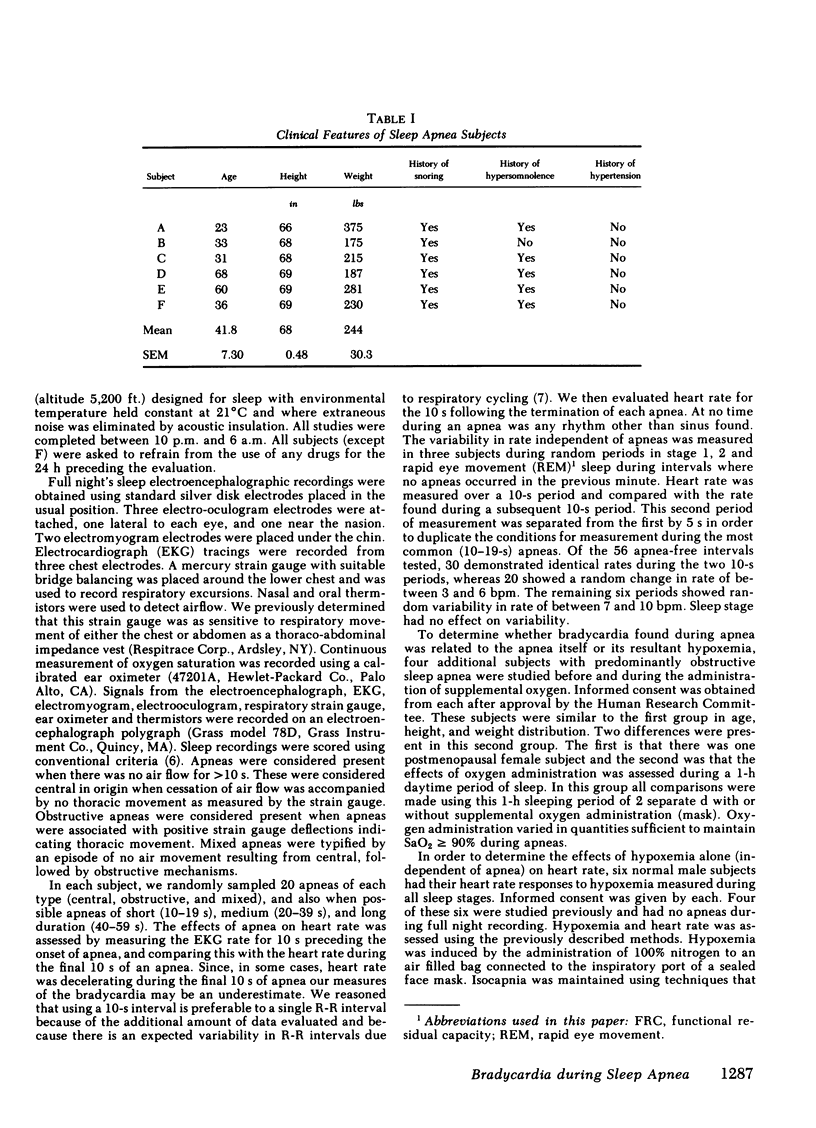
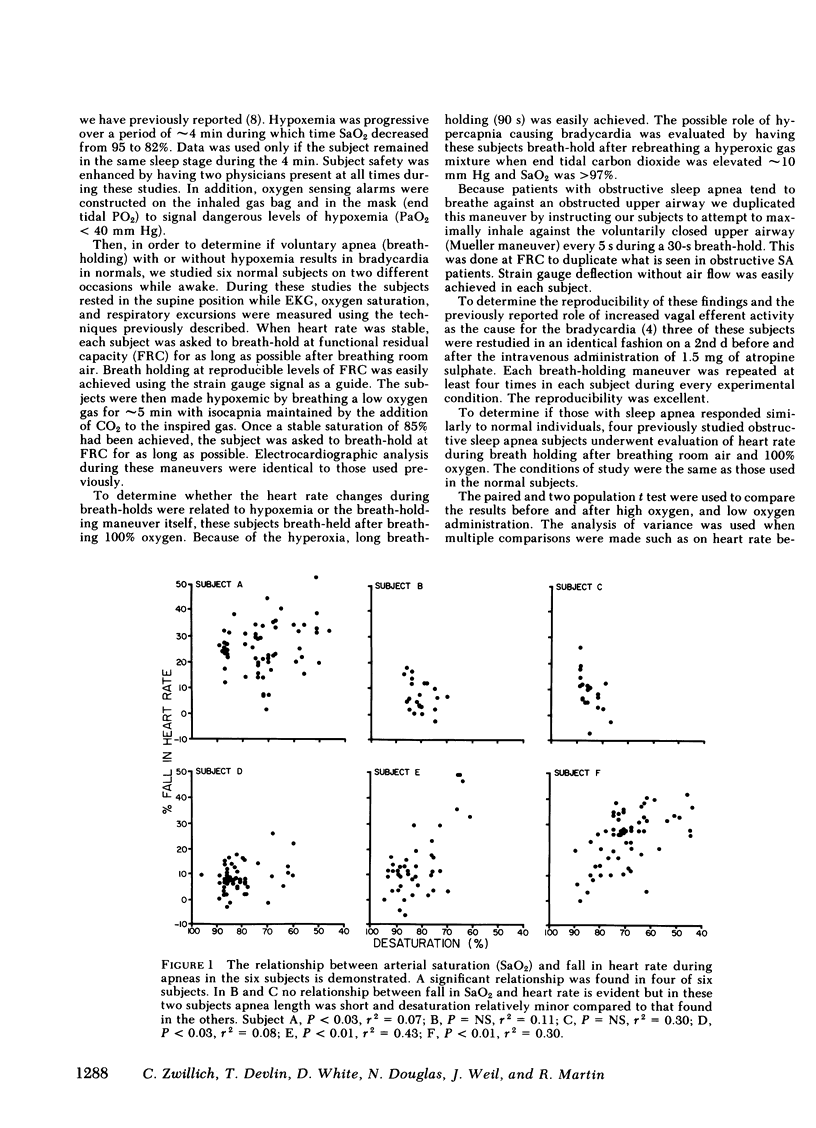
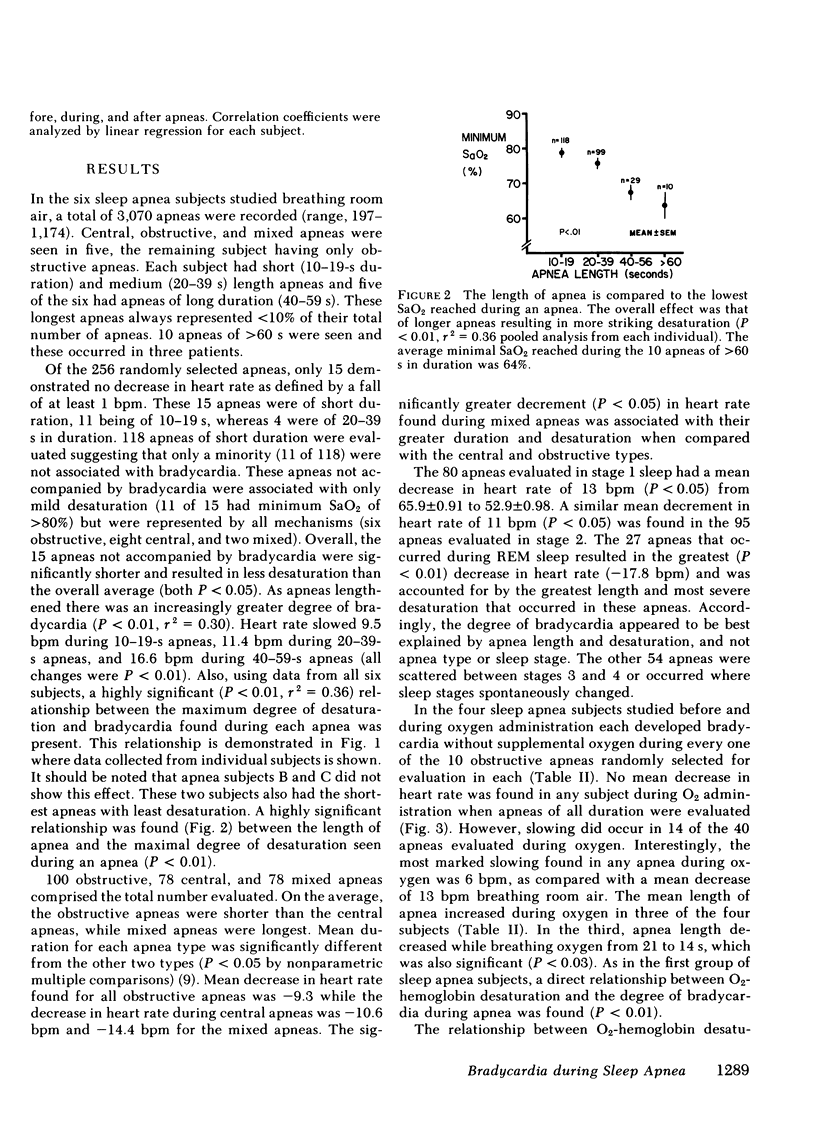
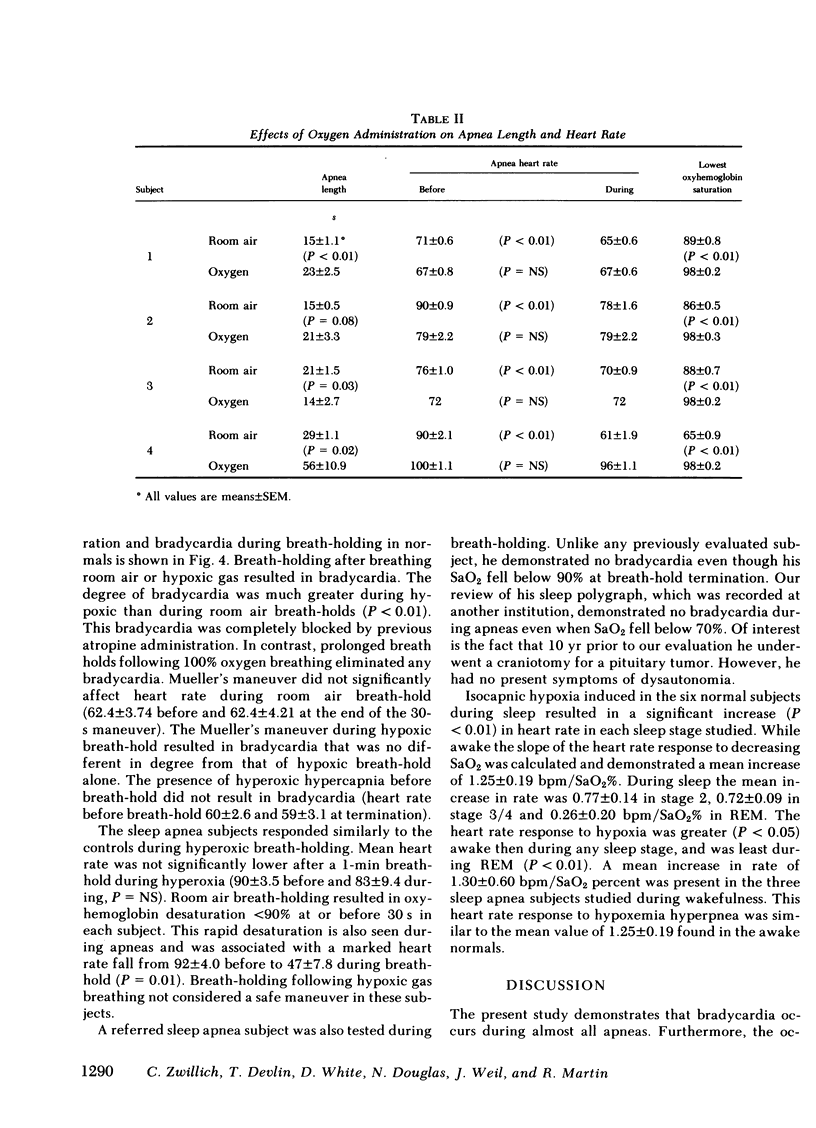
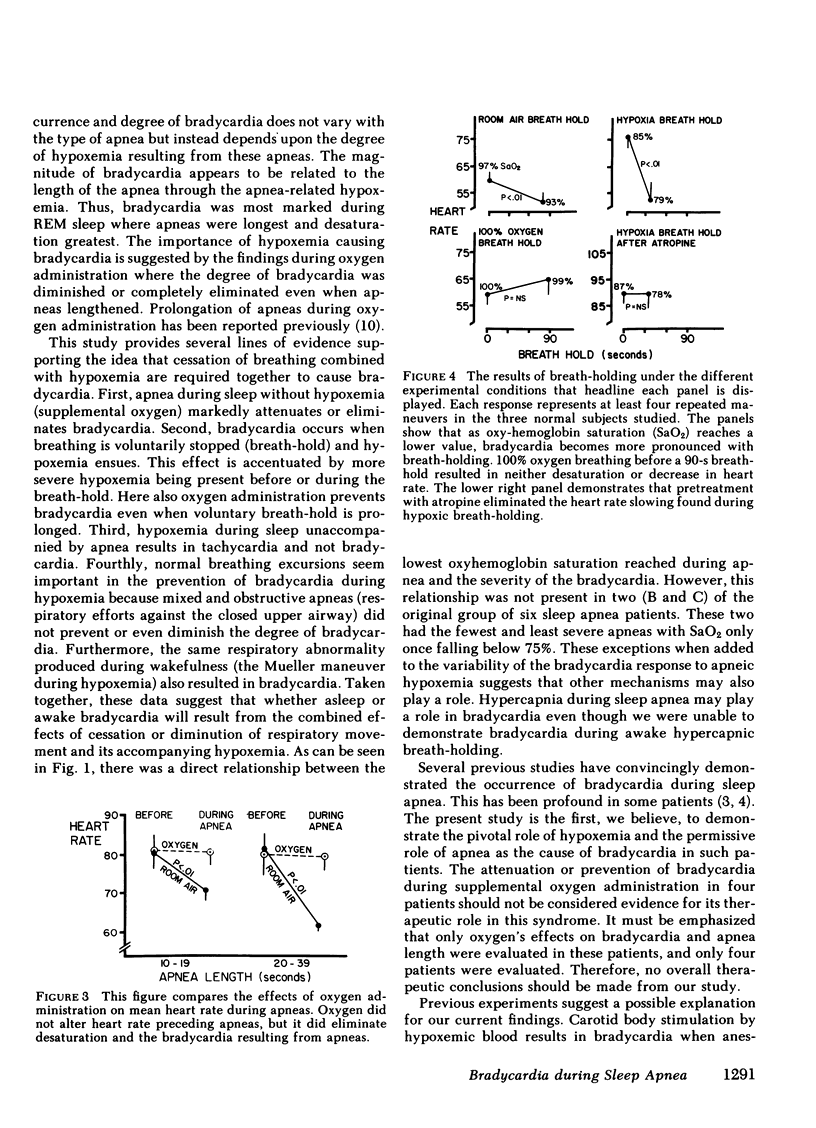
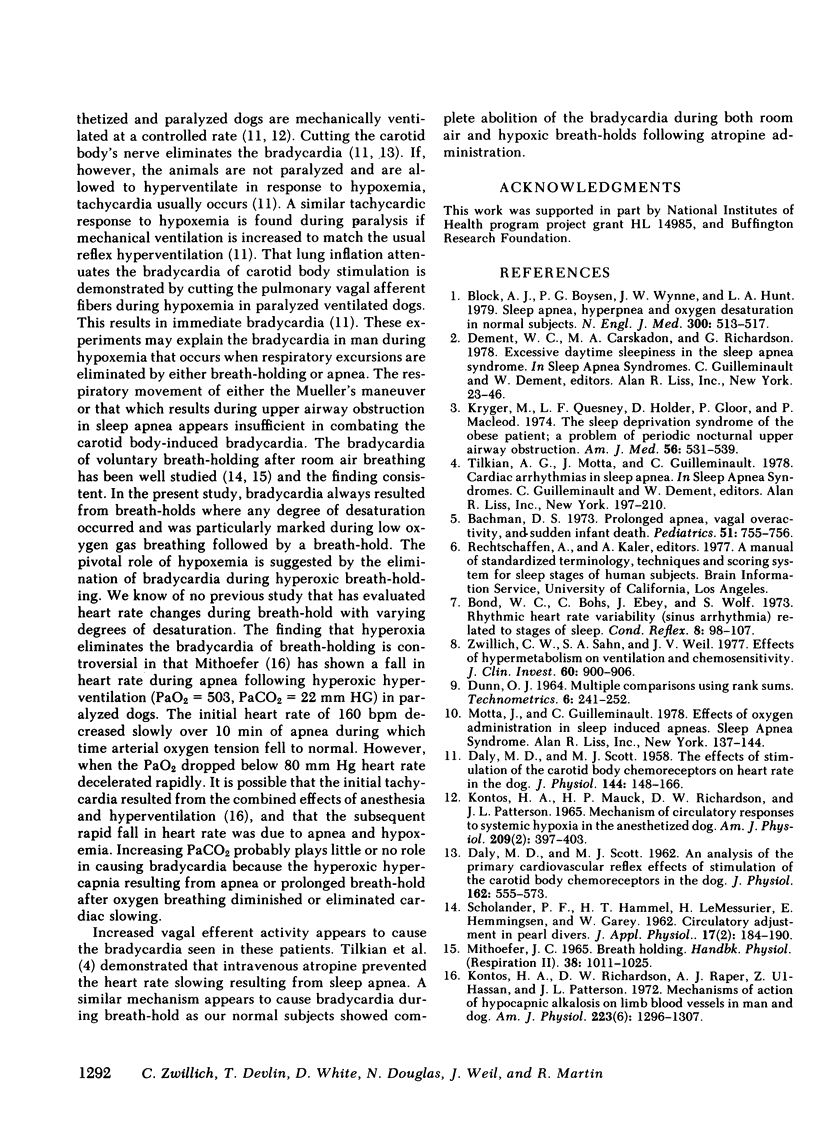
Selected References
These references are in PubMed. This may not be the complete list of references from this article.
- Bachman D. Prolonged apnea, vagal overactivity, and sudden infant death. Pediatrics. 1973 Apr;51(4):755–756. [PubMed] [Google Scholar]
- Block A. J., Boysen P. G., Wynne J. W., Hunt L. A. Sleep apnea, hypopnea and oxygen desaturation in normal subjects. A strong male predominance. N Engl J Med. 1979 Mar 8;300(10):513–517. doi: 10.1056/NEJM197903083001001. [DOI] [PubMed] [Google Scholar]
- Bond W. C., Bohs C., Ebey J., Jr, Wolf S. Rhythmic heart rate variability (sinus arrhythmia) related to stages of sleep. Cond Reflex. 1973 Apr-Jun;8(2):98–107. doi: 10.1007/BF03000310. [DOI] [PubMed] [Google Scholar]
- DE BURGH DALY M., SCOTT M. J. An analysis of the primary cardiovascular reflex effects of stimulation of the carotid body chemoreceptors in the dog. J Physiol. 1962 Aug;162:555–573. doi: 10.1113/jphysiol.1962.sp006950. [DOI] [PMC free article] [PubMed] [Google Scholar]
- DE DALY M. B., SCOTT M. J. The effects of stimulation of the carotid body chemoreceptors on heart rate in the dog. J Physiol. 1958 Nov 10;144(1):148–166. doi: 10.1113/jphysiol.1958.sp006092. [DOI] [PMC free article] [PubMed] [Google Scholar]
- KONTOS H. A., MAUCK H. P., Jr, RICHARDSON D. W., PATTERSON J. L., Jr MECHANISM OF CIRCULATORY RESPONSES TO SYSTEMIC HYPOXIA IN THE ANESTHETIZED DOG. Am J Physiol. 1965 Aug;209:397–403. doi: 10.1152/ajplegacy.1965.209.2.397. [DOI] [PubMed] [Google Scholar]
- Kontos H. A., Richardson D. W., Raper A. J., Zubair-ul-Hassan, Patterson J. L., Jr Mechanisms of action of hypocapnic alkalosis on limb blood vessels in man and dog. Am J Physiol. 1972 Dec;223(6):1296–1307. doi: 10.1152/ajplegacy.1972.223.6.1296. [DOI] [PubMed] [Google Scholar]
- Kryger M., Quesney L. F., Holder D., Gloor P., MacLeod P. The sleep deprivation syndrome of the obese patient. A problem of periodic nocturnal upper airway obstruction. Am J Med. 1974 Apr;56(4):530–539. doi: 10.1016/0002-9343(74)90485-9. [DOI] [PubMed] [Google Scholar]
- SCHOLANDER P. F., HAMMEL H. T., LEMESSURIER H., HEMMINGSEN E., GAREY W. Circulatory adjustment in pearl divers. J Appl Physiol. 1962 Mar;17:184–190. doi: 10.1152/jappl.1962.17.2.184. [DOI] [PubMed] [Google Scholar]
- Zwillich C. W., Sahn S. A., Weil J. V. Effects of hypermetabolism on ventilation and chemosensitivity. J Clin Invest. 1977 Oct;60(4):900–906. doi: 10.1172/JCI108844. [DOI] [PMC free article] [PubMed] [Google Scholar]


